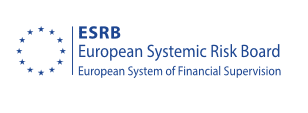The European Systemic Risk Board (ESRB) has said the ETF ecosystem showed some resilience during the period of market stress in March.
This represents somewhat of a shift in the ESRB’s stance on whether ETFs could cause systemic risk to the wider market.
In May, the body said the wide discounts represented friction in the ETF intermediation chain as “authorised participants (APs) would normally align prices through an arbitrage mechanism”.
“Low levels of liquidity in the underlying assets may have hindered this arbitrage mechanism, which normally closes such spreads, as ETF prices internalise the low level of liquidity in the underlying bonds,” the ESRB said.
While it stressed the role of APs still needs to be further assessed, the ESRB said, in its EU Non-bank Financial Intermediation Risk Monitor 2020, the “exceptionally” high discounts for fixed income ETFs seen in March, in fact, may reflect a lack of liquidity in the underlying market.
This, the report said, could be gleaned from APs’ internal pricing information which indicated market values of the underlying bonds were lower than the net asset values (NAVs) suggested.
The report added that as soon as liquidity in the underlying bonds started to improve, their prices adjusted downwards and the NAV spreads came down to pre-crisis levels.
“In times of stress, ETFs can trade at significant discounts in the secondary market, and there may be frictions in the AP mechanism,” the report continued. “However, past volatility events in ETF shares have generally been short-lived, as APs and other liquidity providers have stepped in during periods when the price of the underlying assets and the ETF price diverge.”
“Following the COVID-19 shock, liquidity in the market for less liquid corporate bonds underlying certain fixed income ETFs dried up, as a result of which their NAVs and any corresponding discounts reflected information that was no longer current.”
What happens when the lights go out? An analysis of ETFs when liquidity vanishes
The findings are in line with other bodies such as the Bank for International Settlements which said in an April white paper the wide discounts show ETFs incorporate information quicker than their underlying bonds.
Meanwhile, the Bank of England, in May’s Interim Financial Stability Report, said the secondary market trading of ETFs means “there is a lower risk of a dynamic that incentivises the fire sales of their underlying assets”.
This is compared to mutual funds which run the risk of stark liquidity mismatches during periods of market stress due to the lack of a secondary market.
The ESRB’s recent report has also moved away from its 2019 research which highlighted four areas where ETFs have the potential to cause systemic risk to the global financial system.
These risks included the growing popularity of ETFs, the rise of more complex products such as inverse and leveraged ETFs, investors moving into more illiquid parts of the market through the ETF wrapper and APs not engaging during periods of market stress.





